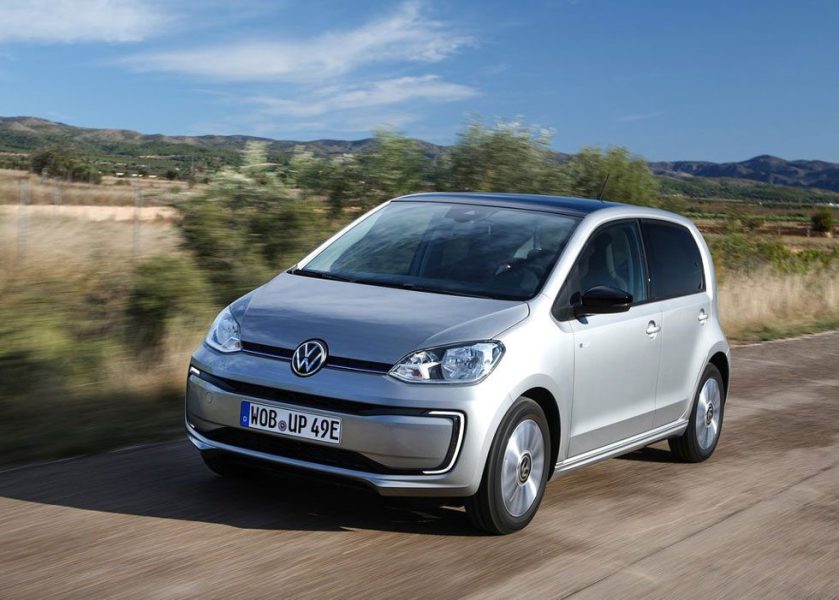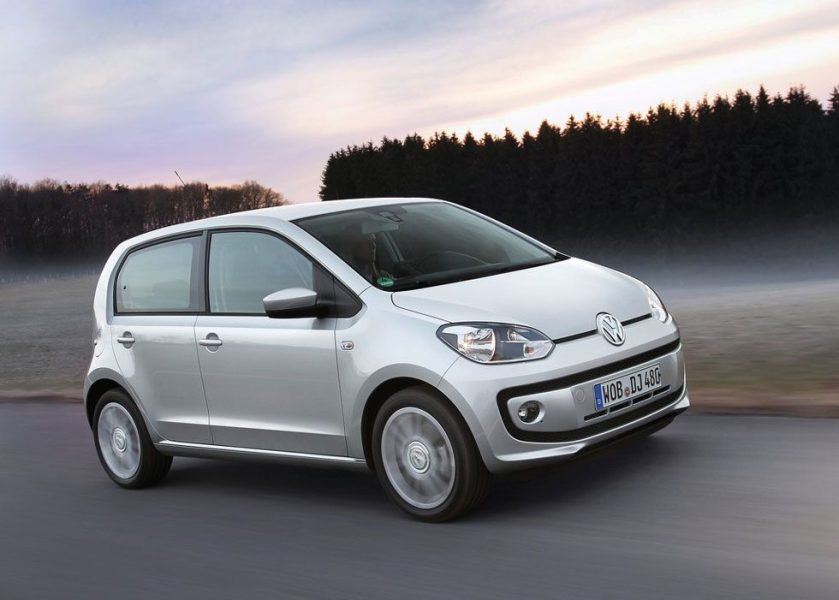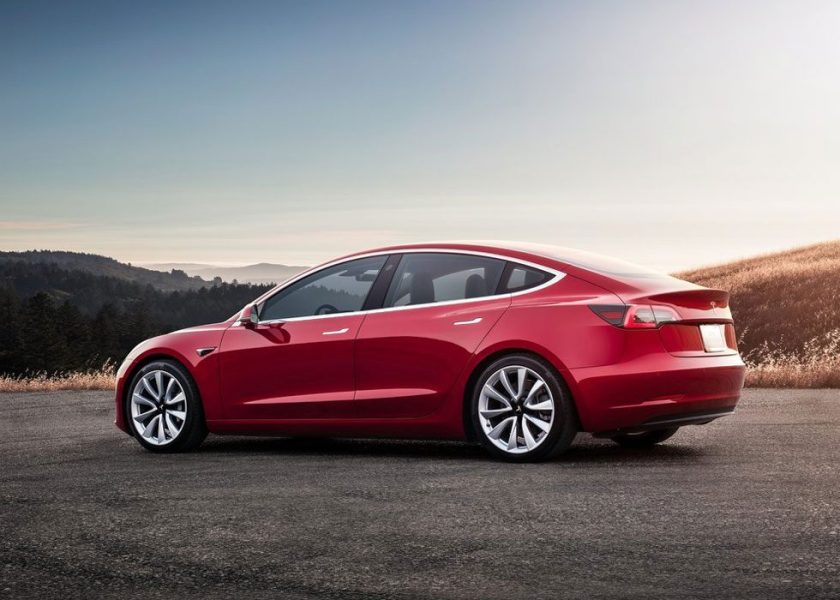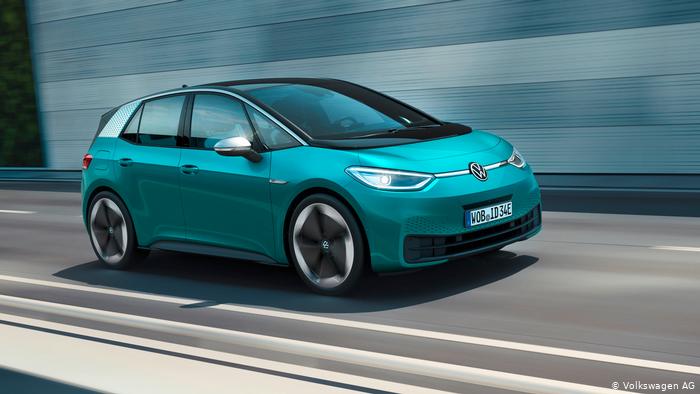
Electric car cost

How much does an electric car cost? Where are electric cars cheaper? When do electric cars get more expensive? In this article: Everything you need to know about the cost of an electric vehicle.
Price
Let's start with the bad news: electric cars are expensive. Now there are various models in the lower segments on the market, but they are still expensive. Such a high purchase price is mainly due to the battery, which contains expensive raw materials.
With a purchase price of approximately 24.000 € 17.000 for the standard model, the Volkswagen e-Up is one of the cheapest electric vehicles on the market. Compared to petrol cars, however, it is still expensive. You can dial up a normal up for about € XNUMX XNUMX. Even the top version of the Up GTI is cheaper than the e-Up.
However, electric vehicles are not out of reach. There are also various options for those who find the A-segment car too cramped. For example, Opel and Peugeot both have electric versions of the Corsa and 208. These cars cost around 30.000 euros. For this money, you also have MG ZS. It is a compact SUV that has a shorter range than the aforementioned hatchbacks, but is more spacious.
The new B-segment vehicles have a range of more than 300 km (WLTP). One of the cheapest cars with a range of more than 480 km is the Hyundai Kona Electric, which has a starting price of approximately 41.600 euros. Tesla currently has cars with the longest range. The 3 Long Range model has a range of 580 km and costs less than 60.000 660 euros. In fact, the Model S Long Range has a range of over 90.000 miles. The price is almost XNUMX XNUMX euros.

examples
The table below shows examples of a range of electric vehicles and their gasoline equivalents. Electric cars are clearly more expensive in all cases.
| Volkswagen Up 1.0 | Volkswagen e Up |
| € 16.640 | about € 24.000 |
| Opel Corsa 1.2 130 hp | Opel Corsa-e 7,4 кВт |
| € 26.749 | € 30.599 |
| Hyundai Kona | Hyundai Kona Electric 39 |
| € 25.835 | € 36.795 |
| BMW 330i xDrive | Tesla Model 3 with all-wheel drive |
| € 55.814 | € 56.980 |
For comparison, the version that is the closest in terms of characteristics was chosen. If you compare the electric version with the entry-level version, the difference becomes even greater. However, this would not be an entirely fair comparison.
battery rental
Renault is taking a slightly different approach than other EV makers. The battery can be rented separately from their electric vehicles. At ZOE, the battery can be rented from 74 to 124 euros per month. The amount depends on the number of kilometers.
Therefore, the battery is not included in the purchase price. Whether it will be cheaper depends on how long you have owned the car and how many kilometers you have traveled. Business Insider has calculated that renting a battery becomes more expensive with high consumption after five years and low consumption after eight years (13.000 km / year). Renault ZOE can also be purchased with a battery.
Rent
In a business lease, an electric car is actually cheaper thanks to the additional cost policy. This is a separate story, which is described in the article on leasing an electric car.
electricity costs
Now for the good news. In terms of variable costs, the EV is beneficial. How cheap depends on where you charge the fee. At home, you just pay the regular electricity rate. This is usually around € 0,22 per kWh. So this is the cheapest option. Rates may differ at public charging points, but usually you pay around € 0,36 per kWh.
fast charging
Fast charging makes it that much more expensive. Prices range from € 0,59 per kWh at Fastned to € 0,79 per kWh at Ionity. Tesla drivers can charge quickly for a lot cheaper: with the Tesla Supercharger, the tariff is only € 0,22 per kWh. For the first time, Model S or Model X owners can even get a quick charge for free.

consumption
An electric car is, by definition, much more efficient than a car with an internal combustion engine. Obviously, some electric vehicles are more economical than others. The Volkswagen e-Up consumes 12,5 kWh per 100 km and the Audi e-Tron 22,4 kWh. On average, an electric car consumes about 15,5 kWh per 100 kilometers.
Electricity costs vs. gasoline costs
With only home charging at a rate of € 0,22 per kWh, this consumption is approximately € 0,03 per kilometer. With a petrol car with a consumption of 1 in 15, you pay € 0,11 per kilometer at € 1,65 per liter. So it makes a big difference.
Always charging from your own charging station is the best, but not the most realistic scenario. Charging only at public charging stations will cost you 0,06 euros per kilometer. It's also significantly cheaper than the average petrol car. The cost of a kilometer is only comparable in amount to the cost of a gas car next to an electric car if you almost always charge quickly. In practice, it will be more of a combination of charging at home, charging at a public charging station, and fast charging.
The article on the cost of driving an electric vehicle details charging costs and electricity costs per kilometer.
service
In terms of maintenance, an electric car is not bad either. An electric powertrain is much less complex and prone to wear and tear than an internal combustion engine and all of its components. So you never have to worry about things like timing belts, oil filters, clutch discs, spark plugs, exhaust systems, etc. This way, the EV has significantly less maintenance costs.
band
The disadvantage is that electric vehicle tires tend to last less. Due to the relatively high torque and power that electric vehicles often have, the tires are heavier. In addition, electric vehicles are heavier. The difference is that some manufacturers use stiffer Eco tires. Of course, making it easier to work with acceleration helps.

Remmen
The brakes on an electric car are less heavy, despite the heavier weight. This is due to the fact that in an electric car it is often possible to slow down on the electric motor. When the accelerator pedal is released, the car brakes because the electric motor acts like a dynamo. This makes the electric transmission more efficient. An additional benefit is the savings on brakes.
However, the brakes are still subject to wear and tear. They are still rusting. Brakes on electric vehicles also need to be replaced over time, but the main reason is rust.
Liquids
What matters also in maintenance is that there are far fewer fluids in an electric vehicle that need to be replaced. Most electric vehicles only contain coolant, brake fluid, and windshield washer fluid.
Battery
The battery is an important and expensive part of an electric car. Therefore, battery replacement is expensive. It's not so much that the batteries will fail at some point, but rather that the capacity will decrease. However, this appears to be the case today. After 250.000 km, the batteries have an average of 92% of their original capacity.
If the battery capacity is really severely reduced, it can be replaced under warranty. The battery comes standard with an eight-year warranty and 160.000 kilometers. Some manufacturers offer even more extended warranties. Usually you are eligible for a guarantee if the capacity has dropped below 70%. However, you can count on a decent battery capacity even after 160.000 km. The battery does not play a role in the maintenance costs of an electric vehicle, especially in the first few years.
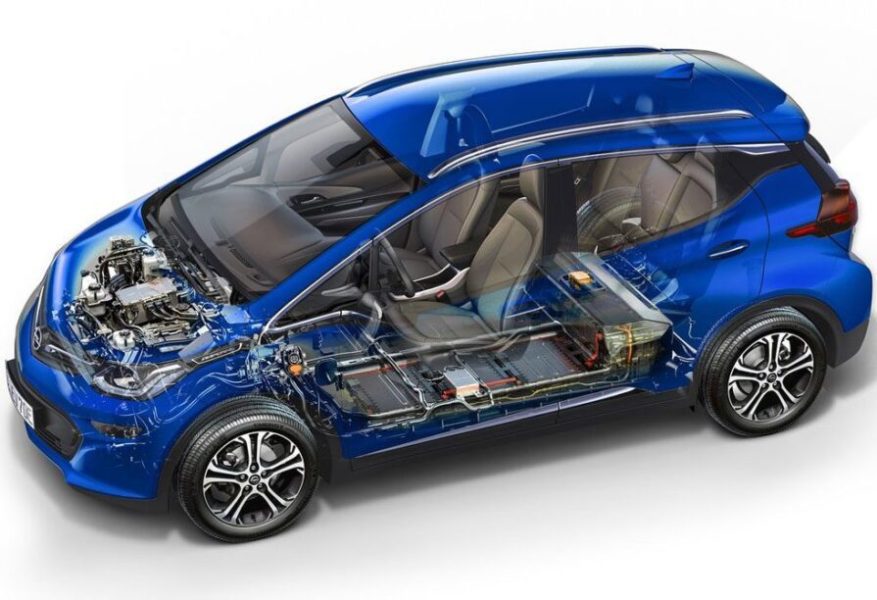
road tax
We can briefly talk about the motto vehicle tax or road tax: it is currently zero euros for electric vehicles. This, in turn, saves on fixed costs for an electric vehicle. This is valid in any case until 2024. According to current planning, as an electric car driver, you pay a quarter of the road tax in 2025 and the full amount from 2026. More on this in the article on electric vehicles and road tax.
Depreciation
The story about the cost of an electric car should also include depreciation. In a few years, we will find out what the actual residual value of current electric vehicles will be. However, the expectations are positive. Based on research, ING predicts that C-segment EVs will still have 40% to 47,5% new value in five years. This is higher than for gasoline cars (35-42%) and certainly higher than for diesel cars (27,5-35%) from the same segment.
This favorable residual value expectation is partly due to the increased range. It is true that there will be cars with even greater range in five years' time, but that does not mean that there will be no more demand for current electric vehicles. According to ING, by 2025, a quarter of the market will consider used electric vehicles.
Insurance
Electric car insurance is usually higher than regular car insurance. How large this difference can be can vary significantly. With all-risk insurance, insurance for an electric vehicle can sometimes cost almost double. This is partly due to the higher purchase price. In the event of damage, repairs also become more expensive, so that also plays a role. If you are renting a separate battery, you also need to take out separate insurance. In Renault, this is possible from 9,35 euros per month.
Calculation examples
In the paragraphs above, we spoke in fairly general terms. The big question is how much an electric car actually costs and how much does it cost compared to conventional cars. This is why we calculate the total cost or total cost of ownership for three specific vehicles. We then parked a comparable gasoline car next to it.
Example 1: Volkswagen e-Up vs. Volkswagen Up
The purchase price for the Volkswagen e-Up is approximately EUR 24.000. This makes it one of the cheapest electric vehicles around. However, the purchase price is significantly higher than the Up 1.0. It costs 16.640 83 euros. This is not quite a fair comparison, because the e-Up has 60 hp. instead of XNUMX hp and more options. However, this does not change the fact that e-Up is still expensive.
E-Up consumes 12,7 kWh per 100 km. How much it costs depends on the charging method. In this calculation example, we assume a combination of 75% charging at home at € 0,22 per kWh, 15% charging at a public charging station at € 0,36 per kWh and 10% charging on a fast charger at € 0,59 per kWh.
With the usual Up 1.0, maintenance costs will be around 530 € per year. With e-Up, you can count on lower maintenance costs: around 400 euros per year. The road tax costs are higher anyway. For e-Up, you do not pay road tax, but for Up, which is 1.0 euros per year (in the average province).
The cost of insurance is the usual rate up. All risk insurance for e-Up is much more expensive. Allianz Direct is one of the cheapest providers and you still pay 660 euros per year (based on 10.000 km per year, age 35 and 5 years without claims). For a regular Up, you pay € 365 per year with the same insurer.
When depreciating, we assume that the residual value Up 1.0 will still be around € 5 in 8.000 years. According to current expectations, the e-Up will retain its value slightly better, with a residual value of € 13.000 in five years.
Total cost of ownership
If we put all of the above data into the calculation, this gives the following amounts:
| VW e Up | VW Up 1.0 | |
| Price | € 24.000 | €16.640 |
| electricity costs / petrol bone (100 km) | €3,53 | €7,26 |
| electricity costs / gasoline costs (per year) | €353 | €726 |
| Maintenance (per year) | €400 | €530 |
| Mrb (per year) | €0 | €324 |
| Insurance (per year) | €660 | €365 |
| Depreciation (per year) | €2.168 | €1.554 |
| TCO (after 5 years) | €17.905 | €17.495 |
If you drive 10.000 17.905 km per year and own a car for five years, you will pay a total of 17.495 € for an e-Up. The cheapest petrol Up costs XNUMX XNUMX euros over the same period. Where the difference in purchase price has been large, the difference in total costs is still very small. The E-Up is still slightly more expensive, but it has more power and more features.
Of course, there are many pitfalls that may differ in your personal situation. If, for example, you drive a little more kilometers a year and charge your houses a little more, then the balance will already be in favor of the e-Up.
Example 2: Peugeot e-208 vs. Peugeot 208 1.2

e-208 
208
Let's also apply the same calculation to a B-segment car. In this segment, for example, there is Peugeot e-208. It is similar to the 208 1.2 Puretech 130. As the name suggests, it has 130 HP, while the e-208 has 136 HP. The electric 208 costs 31.950 euros, while the petrol version costs 29.580 euros.
Of course, several starting points must be chosen to calculate the total cost of ownership. In this case, we have assumed 15.000 km per year and a residual value of 17.500 208 euros for the e-11.000 and 208 75 euros for the regular 15. For charging, we again assume that 10% of the charging is done at home and 35% at a public charging station. and 5% charge on fast charging. For insurance, we accepted the age of XNUMX years and XNUMX years without claims.
Total cost of ownership
Taking into account the mentioned data, we get the following picture of costs:
| Peugeot E-208 50 kWh 136 | Peugeot 208 1.2 Puretech 130 | |
| Price | €31.950 | €29.580 |
| electricity costs / petrol bone (100 km) | €3,89 | €7,10 |
| electricity costs / gasoline costs (per year) | €583,50 | €1.064,25 |
| Maintenance (per year) | €475 | €565 |
| Mrb (per year) | €0 | €516 |
| Insurance (per year) | €756 | €708 |
| Depreciation (per year) | €3.500 | €2.200 |
| TCO (after 5 years) | €5.314,50 | €5.053,25 |
In this situation, the electric 208 is therefore even more expensive. The difference is again small. It depends to some extent on personal preference, but the certain advantages of an electric vehicle can certainly justify the difference.
Example 3: Tesla Model 3 Long Range vs. BMW 330i

Model 3 
Video 3
To see what the higher end pricing picture looks like, we also include the Tesla Model 3 Long Range AWD. This is comparable to the BMW 330i xDrive. Tesla is priced at € 56.980. The 330i is slightly cheaper, with a purchase price of € 55.814 3. The 75 Long Range has a 351 kWh battery and 330 hp. The 258i has a four-row engine with XNUMX hp.
The basic principles are much the same as in the previous example. In terms of energy costs, we assume that this time we charge 75% of the house at € 0,22 per kWh and 25% charging with a Tesla Supercharger at € 0,25 per kWh. For Tesla's residual value, we assume approximately 28.000 € 15.000 in five years and 330 23.000 km per year. The outlook for the XNUMXi is somewhat less favorable, with an expected residual value of XNUMX XNUMX euros.
Tesla is a little more difficult to insure. Therefore, insurers have less choice. At the cheapest supplier, Model 3 is insured for 112 euros per month against all risks (subject to 15.000 35 km per year, age 5 and 3 years without claims). Similar insurance is available for the 61st series from € XNUMX per month.
Total cost of ownership
With the above variables, we get the following cost:
| Tesla Model 3 Large AWD range | BMW 330i xDrive | |
| Price | €56.980 | €55.814 |
| electricity costs / petrol bone (100 km) | €3,03 | €9,90 |
| electricity costs / gasoline costs (per year) | €454,50 | €1.485,50 |
| Maintenance (per year) | €600 | €750 |
| Mrb (per year) | €0 | €900 |
| Insurance (per year) | €112 | €61 |
| Depreciation (per year) | €6.196 | €6.775 |
| TCO (after 5 years) | €36.812,50 | €49.857,50 |
After 5 years and a total of 75.000 36.812,50 km you will lose 330 330 € on Tesla. However, in the same situation, you will lose almost half a ton at 3i. While the 15.000i was a bit more affordable, the Model XNUMX will become a little more affordable in the long run. The moment you drive over XNUMX km a year, the cost will look even more profitable.
Conclusion
In terms of costs, the purchase price is the biggest obstacle when it comes to EVs. However, if this obstacle is overcome, there are many financial benefits. Thus, you do not pay road tax and the maintenance costs are lower. However, the main advantage is that electricity is significantly cheaper than gasoline. The residual value of existing electric vehicles is expected to be higher than that of gasoline vehicles. Apart from the purchase price, the only drawback is the higher cost of insurance.
Despite these advantages, electric cars aren't always cheaper in the long run. After five years, the difference is often very small. When you factor in the non-financial benefits, this difference can pay off. This is a personal decision. There are also many situations where the total cost of an electric vehicle is actually lower. For example, if you drive more than 25.000 km per year and have a C segment or higher vehicle, it is often cheaper for you to buy an electric vehicle.


